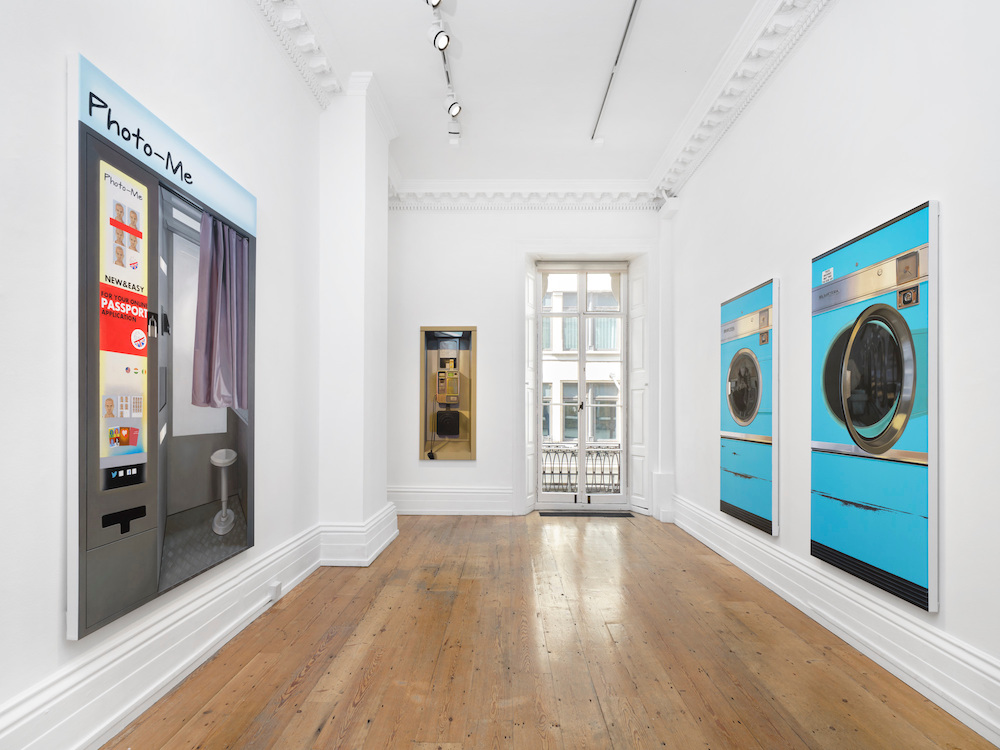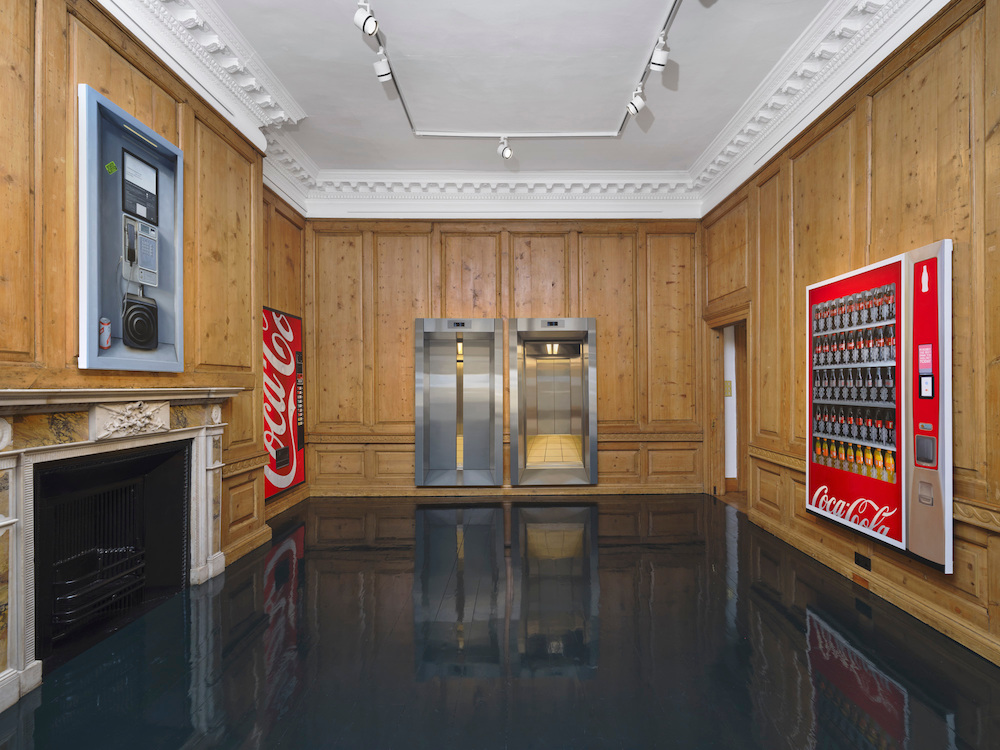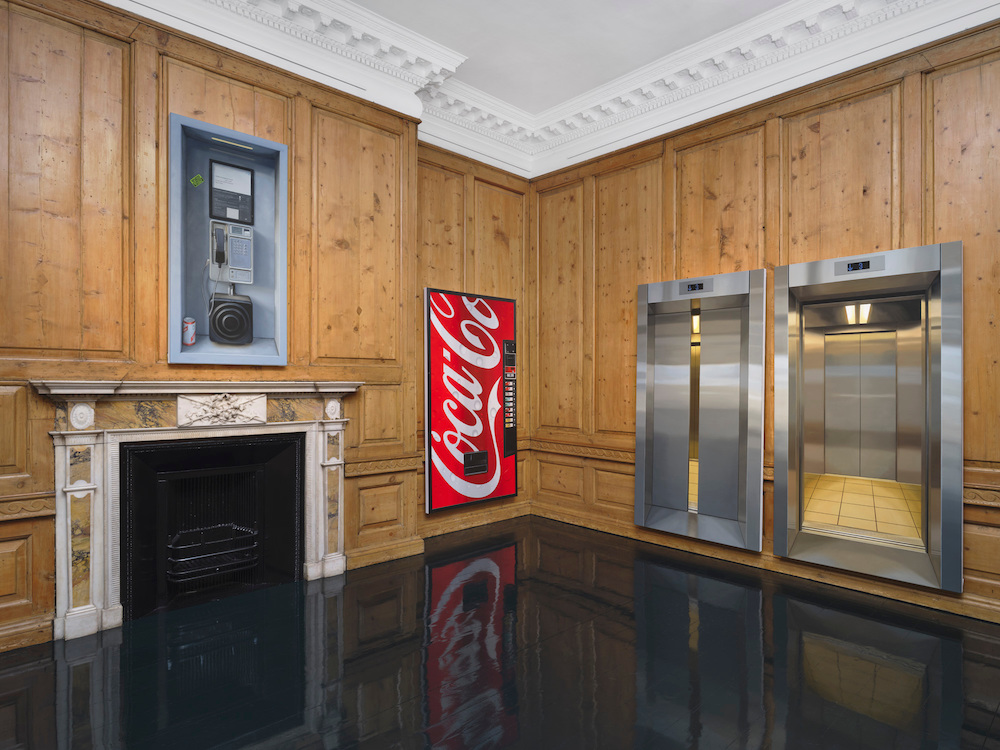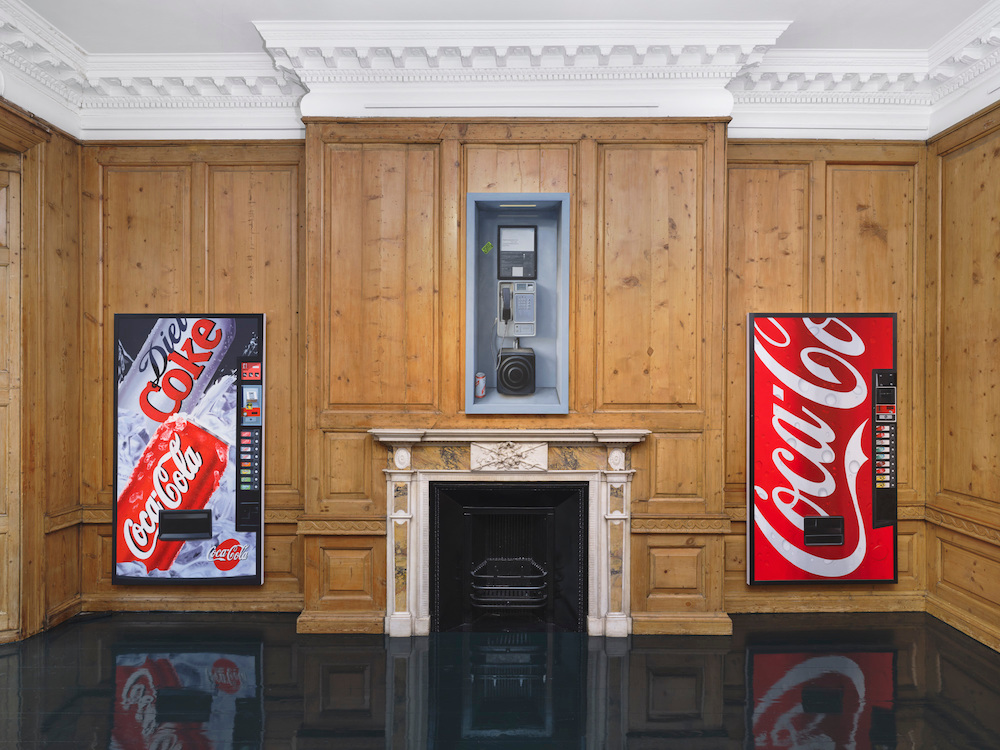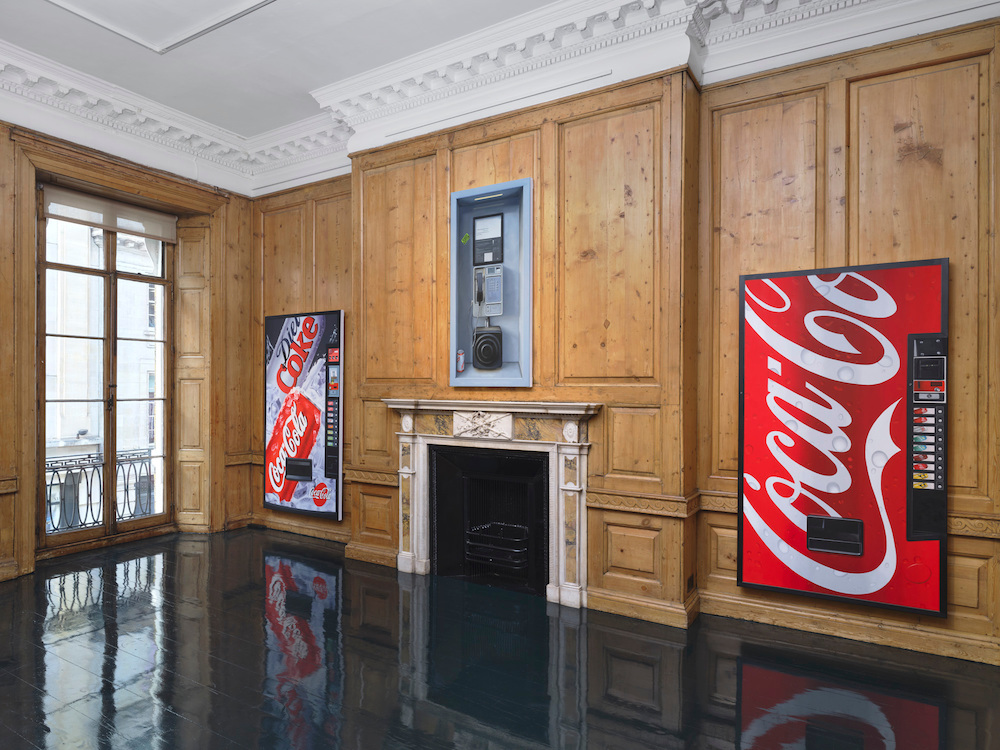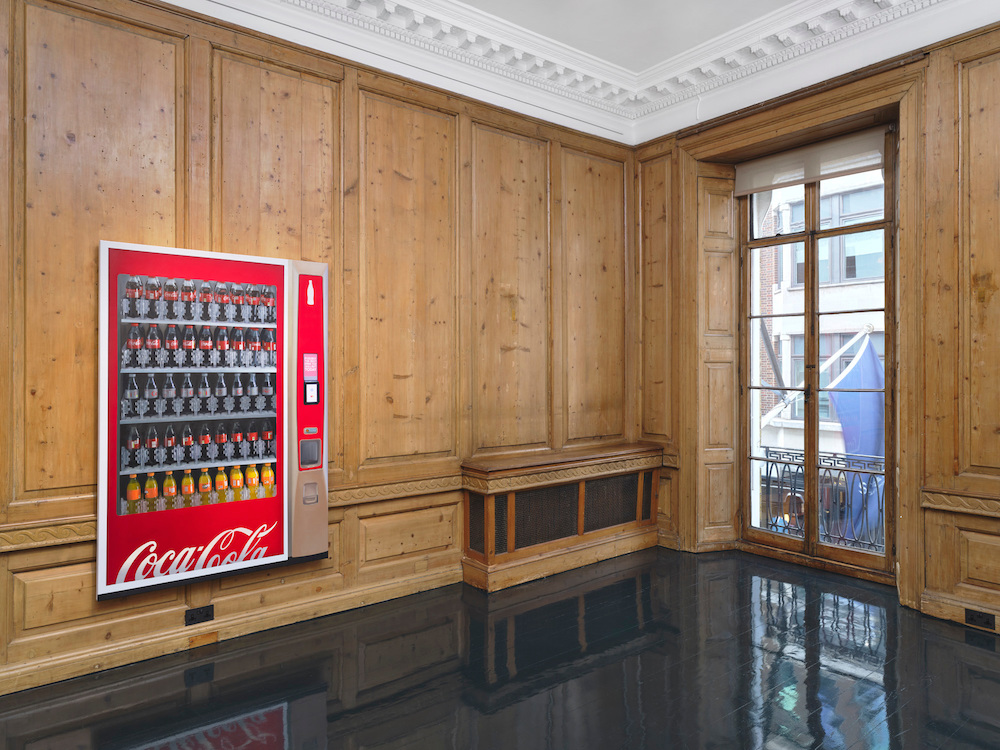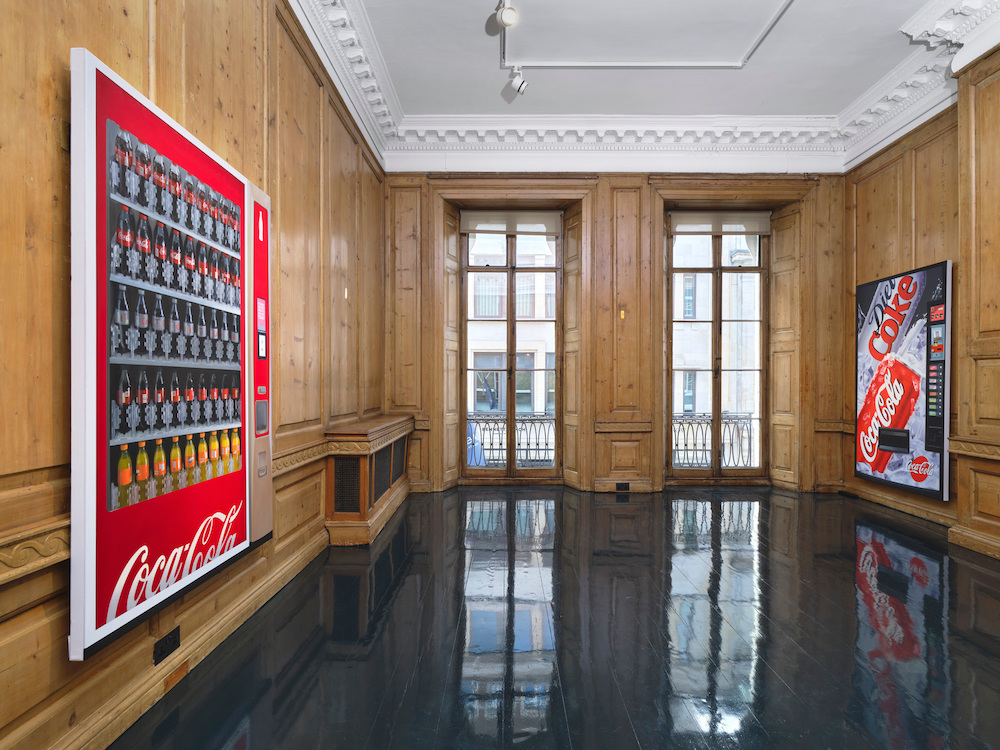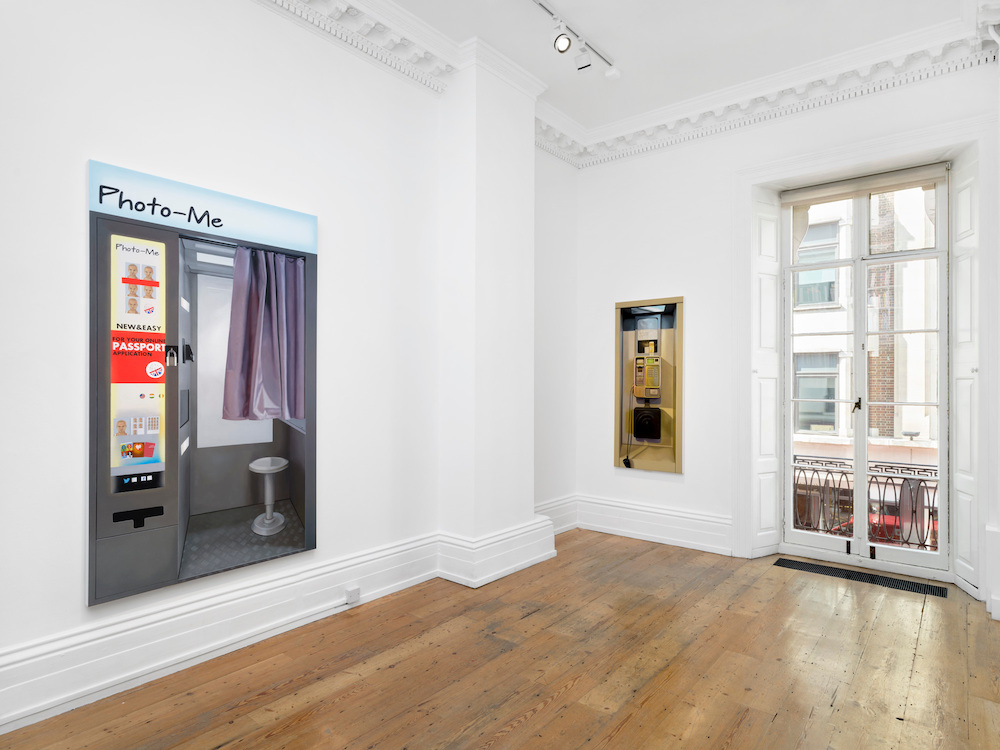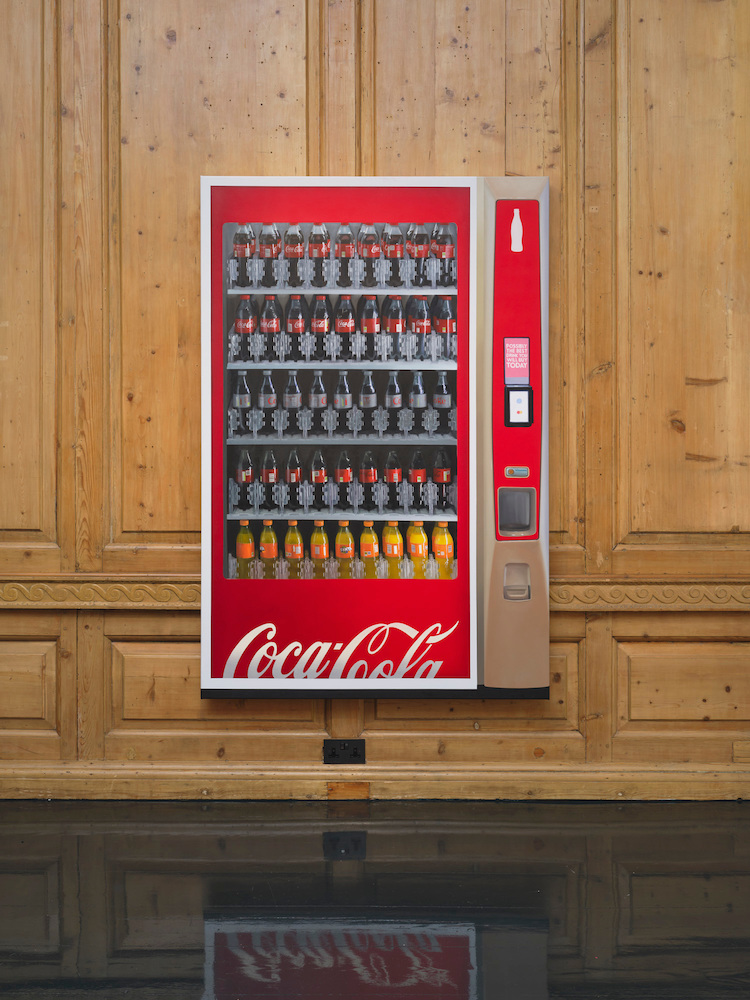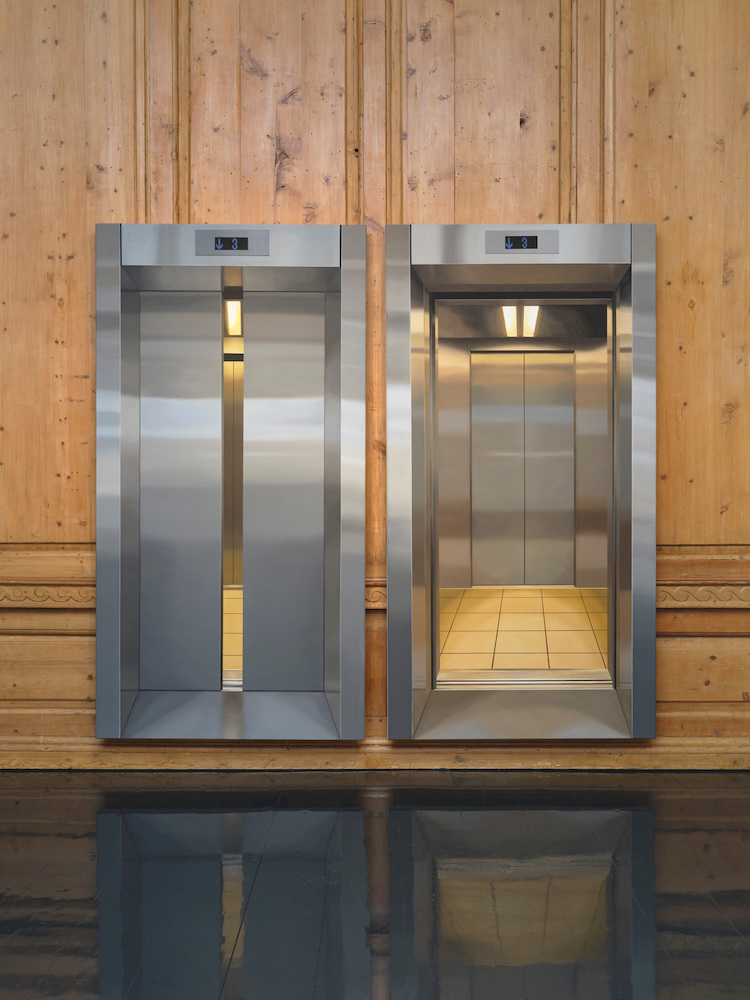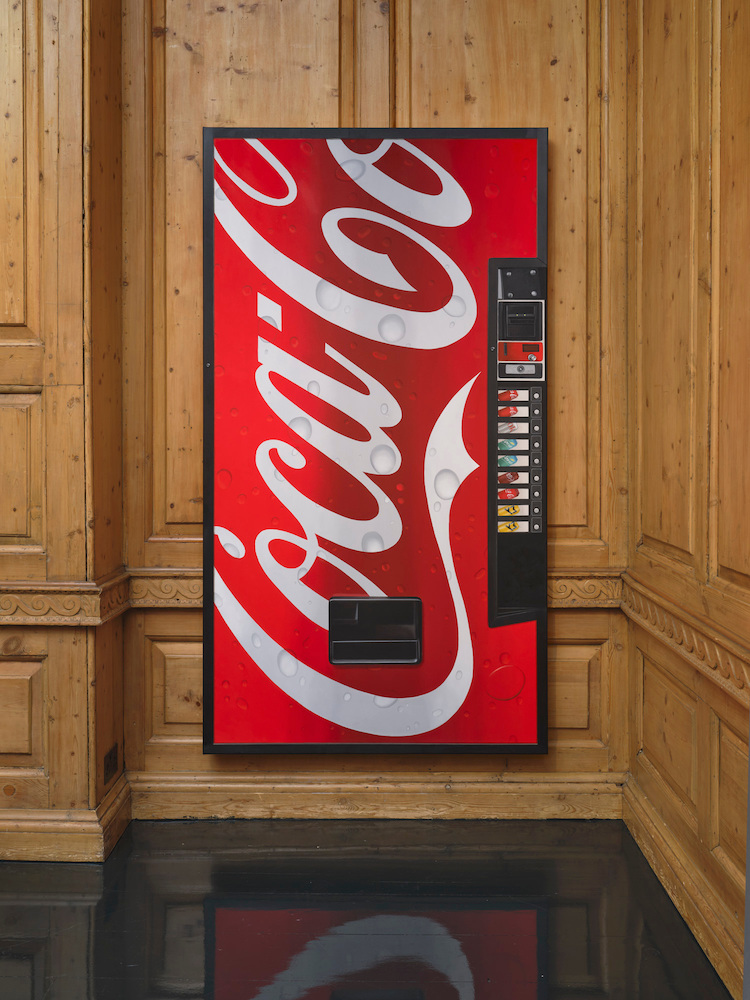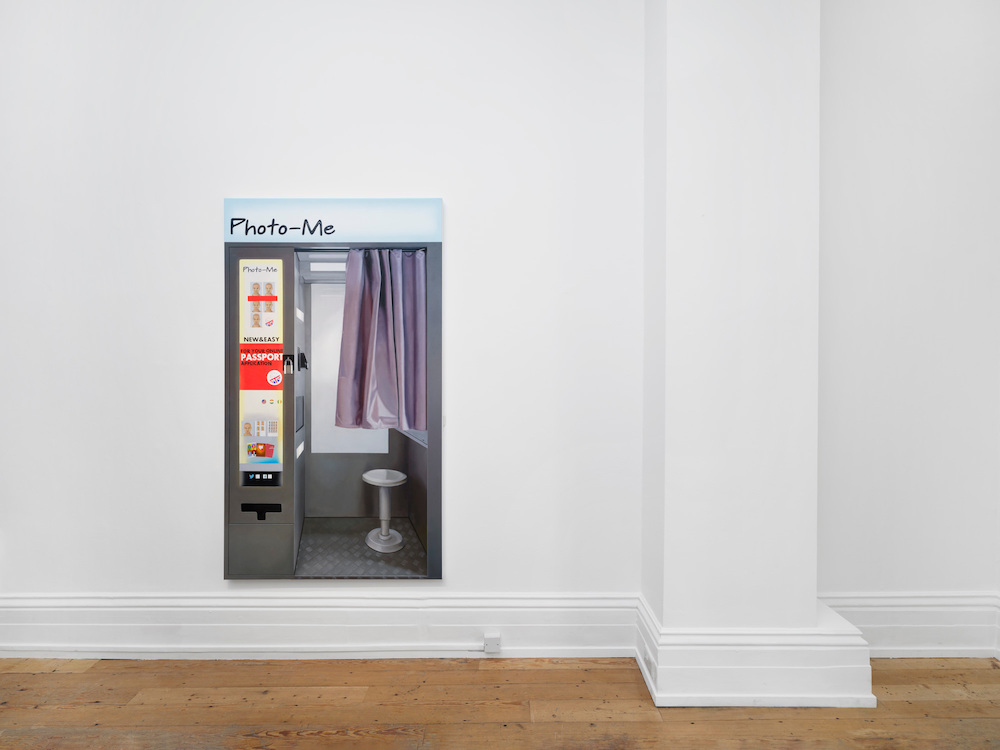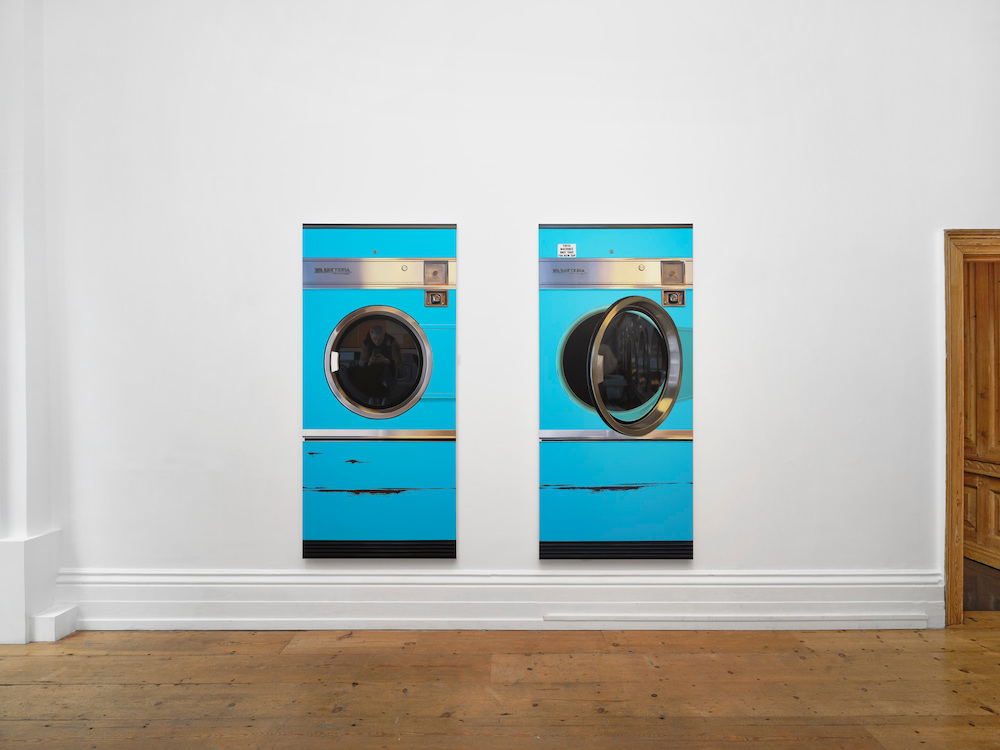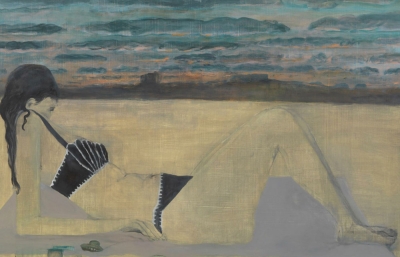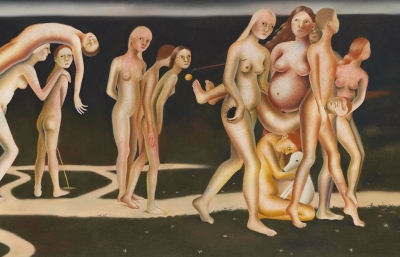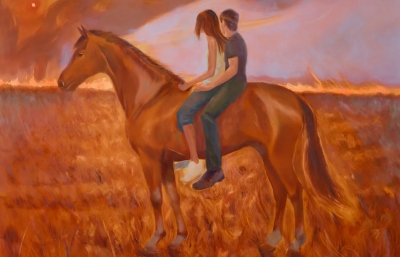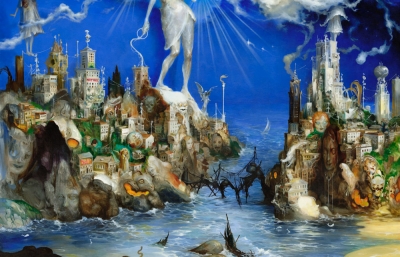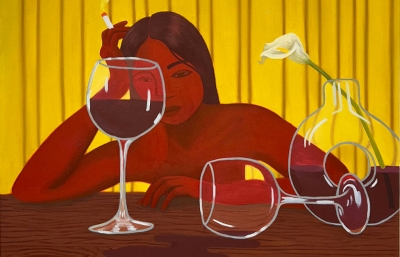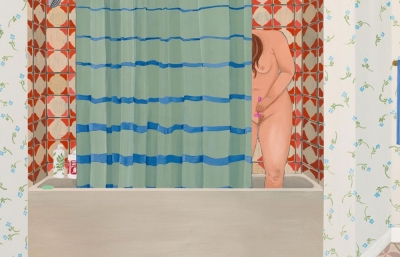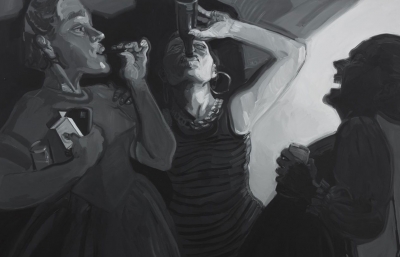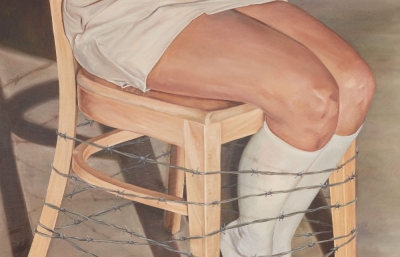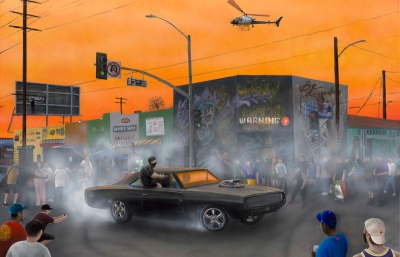Carl Kostyál proudly presents Look but don’t touch, Callum Eaton’s debut solo exhibition with the gallery. Having pursued that particular painterly perfection of photorealism since his time at Goldsmiths (BA Fine Art, 2019), Callum Eaton watched on with a sense of satisfaction when an inebriated attendee of an early open studio session attempted, inevitably in vain, to interact with a two-dimensional depiction of a conventional cash machine. The frustrated fumblings of Eaton’s incapacitated patron recall that renowned Grecian tale of illusionary artworks, Zeuxis and Parrhasius’ contest of artistic artifice. The latter, incensed at the former’s ability to produce a still-life so accurate that birds would fly down in an effort to pick at the grapes portrayed, decided to develop his own deceitful depiction. When complete, Parrhasius invited his unwitting rival to view his latest masterpiece, safely stored behind the draped curtains of his studio. Upon reaching out to unveil the artwork, an unsuspecting Zeuxis encountered only solid surface and yielded to the superior draughtsman, the curtains themselves being Parrhasius’s painting.
For his London debut exhibition at Carl Kostyál, Eaton has made an expanded selection of the oft-overlooked street furniture and urban architecture that populate the artist’s hometown. Imbued with an acute awareness of conceptual art developed during his time at Goldsmiths and a wry critique of the ever-increasing commercialisation of contemporary culture in 21st-century society, Eaton’s art inhabits a world reduced to two dimensions. These everyday objects – their coin slots, keypads and buttons eagerly awaiting use – appear rather as readymades. They retain their form but lose their function.
Street-side telephone boxes made all but obsolete by mobile phones and now regularly removed by councils and city planners, remain as reliquaries to unrelenting digital advancement. Coca-Cola vending machines replete with Warholian repetition expose Eaton’s labour-intensive like-for-like replication of on-demand appeasement, while elevators from the artist’s own studio space in the City of London retain eerie echoes of their former life ferrying bankers and business people. Employing that trompe-l’œil trickery popularised by French genre-painter Louis-Léopold Boilly – whose portrayal of overlaid sheets of paper was selected for the Paris Salon of 1800 – Eaton doggedly documents his everyday environment, each painting becoming a new piece of his Sims-esque city-building expansion pack.
And just as the artist is present in Jan van Eyck’s famed Arnolfini Portrait easter-egg or the secret self-portraits that Baroque-period painter Clara Peeters snuck into her still-lives, Eaton himself appears as both an apparition reflected in the door of a launderette’s Washeteria and the example images one might obtain from a Photo-Me self-service photo-booth. The artist as subject – as object perhaps – blurring the lines between the real world he inhabits, and the flattened substrata simulation that exists on the surface of each canvas. —Hector Campbell



